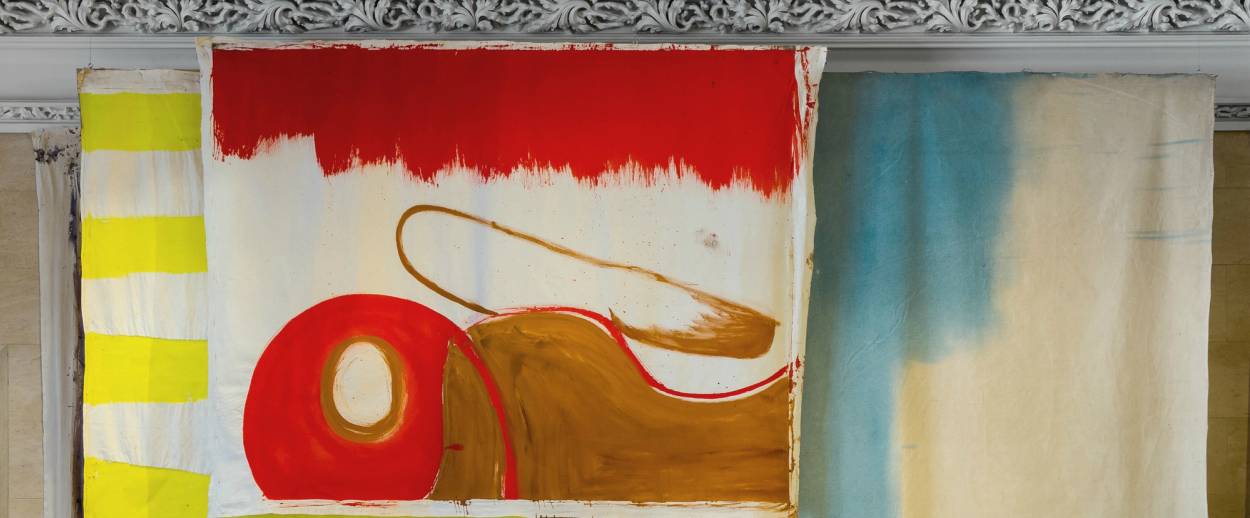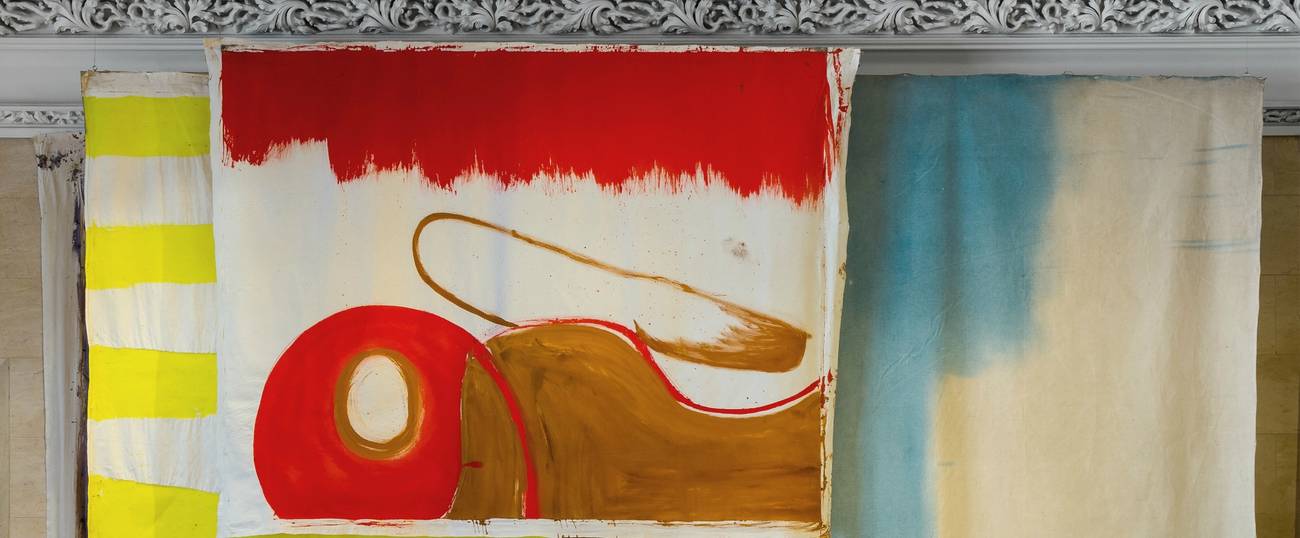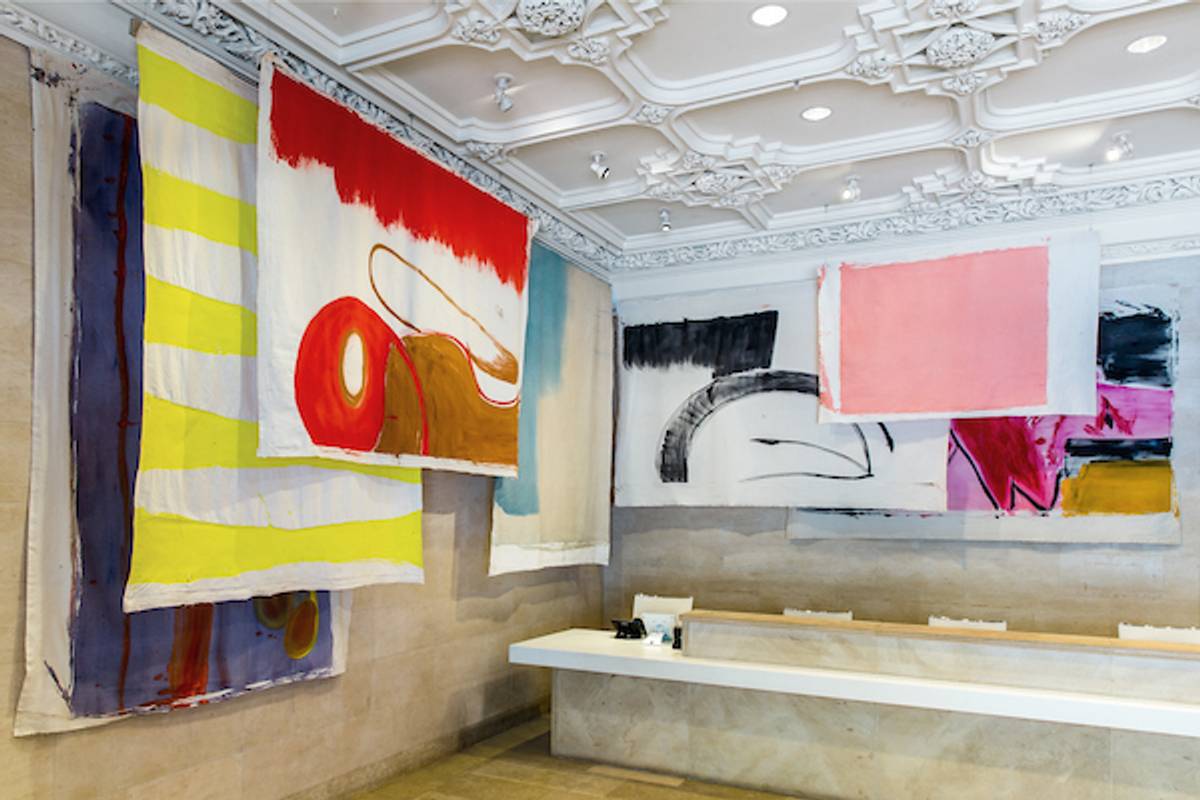Vivian Suter Exhibit Enlivens Jewish Museum Lobby
Paintings from the Guatemala-based artist, who lives on a disused coffee plantation, canvas the museum’s entrance with color




There’s more than meets the eye when it comes to Vivian Suter’s vivid, abstract paintings, which are on display now through October 22 at the Jewish Museum in Manhattan. Part of the “Using Walls, Floors, and Ceilings” series, Suter’s work occupies a corner of the museum’s lobby, bringing a touch of whimsy to an otherwise utilitarian environment.
Past artists featured in the series—which was established in 2013 as an homage to a 1970 exhibition with a similar premise—include the Paris-based, activism-oriented art collective Claire Fontaine; Valeska Soares, a Brazilian, New York-based contemporary sculpture artist; and Alex Israel, whose playful silhouette self-portraits explore the mythos of his hometown of Los Angeles. “Each of the artists exhibits some tendency to be able to work in that kind of space,” said Kelly Taxter, the curator of the Suter exhibit.

In tone, Suter’s paintings—which are hung on bars and overlap one another—run the gamut from soothing (think ocean blue and pale yellow melding together like a beachy yin and yang symbol) to brash, like a fauvist palette of magenta and dark blue, with a splash of burnt orange. Altogether, the playfully-pigmented canvasses invite museum-goers to linger in the lobby rather than plow ahead to the more traditional exhibits, transforming what would ordinarily be a dead space into a focal point.
Born in 1949 in Buenos Aires to Jewish parents who fled Vienna, Suter now lives and works on a disused coffee plantation in Panajachel, Guatemala—a country she fell in love with while vacationing there—with her mother, Elisabeth Wild, who is also an artist. Both women’s pieces were shown together in 2014 at Kunsthalle Basel in Switzerland. This year, Suter’s art will be included in documenta 14, a contemporary exhibition held in Athens, Greece, and Kassel, Germany.
Since Suter’s home is in a remote area near Lake Atitlán, she sources locally-woven canvasses. Although she has a studio, she paints outside, too, allowing nature to organically influence her work in ways small and large. For instance, if a leaf falls on top of a canvass, she’ll trace its shape. And if a storm blows through town? That’s no problem for Suter, whose art bears traces of water damage from Hurricane Stan and Tropical Storm Agatha.
“Her studio flooded knee-deep several years ago, and everything got a watermark on it,” Taxter said. “But that was okay. She let that happen as part of the work and didn’t let that dictate ‘this piece is ruined,’ or ‘I have to start over.’ It just became part of the process.”
Previous: Russ & Daughters Opens Kosher Restaurant at the Jewish Museum
Related: Chareau’s Ghostly Interiors at the Jewish Museum
Zoe Miller is Tablet’s editorial intern. Follow her on Twitter here.